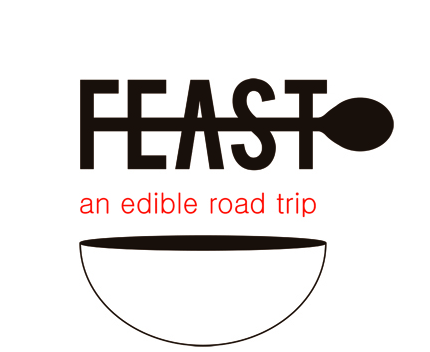Killer Snacks at the Top of the World
Our epic, 7-hour train journey from Kandy to Bandarawela took us high into the mountains. I was now in tea. RIGHT IN THE MIDDLE OF IT.
As we pulled in, green mountains dominated the view, and a sign on the outskirts of town welcomed us to “The Cool Climes of Bandarawela” (I, for one, continued to sweat). We checked into the Orient Hotel, and I discovered my room overlooked a golden-domed mosque.
That night, we climbed up to the hotel’s rooftop patio, where I was privy to yet another cooking class.
We made chicken curry and pumpkin curry, the latter of which was thickened by a powder we made from toasted and ground rice.
The chefs cooked up more dishes and we feasted, drinking bottles of Lion Lager to cool down and perpetually waving mosquitos away.
The next morning, we set out to ascend Lipton’s Seat, the point from which Scottish tea baron Sir Thomas Lipton once surveyed his tea-dom (from a seated position, we can only assume).
On our way, as we drove along a serpentine mountain road, Seth all of a sudden shouted “STOP!” and we pulled over abruptly. He’d spotted a group of women picking tea, and we scrambled up the steep hillside to ask if we could film them.
They were game.
Here are a few fascinating things about tea pickers in Sri Lanka’s Hill country: they’re almost always women, they’re typically the primary breadwinners in their families, and most of them do not look young.
In fact, many are grandmothers who’ve been doing it for decades. They work 8-9 hours a day in the baking heat, then head home to cook dinner, clean house, and look after their children or grandchildren. In other words, they are super heroes, and friendly ones at that.
All the tea pickers we met were gracious with our requests to film and photograph, and one woman even made sure to give me an address to which I could send some photos. We also tipped them, which I would certainly recommend if you’re a tourist who’s planning (as we did) to interrupt their work day.
The women were dressed in coarse, sturdy clothes, and collected the leaves in sacks hanging from their heads and down their backs. I was told women have traditionally made up the tea-plucking work force because of their dedication to quality, rather than quantity. Their husbands typically maintain the family garden, growing food that’s harvested year-round.
As we continued up, we came across another group of pickers who were on their morning break.
They poured me a cup of tea, and sliced into a sweet, fresh peach to offer as a snack.
This image of them, a colourful mass at the edge of a mountain, is one I often think of when I talk about the trip.
After my tea and peach snack, we continued on. Many switchbacks later, we finally reached Lipton’s Seat, a narrow ridge of land between two immense valleys.
As Sri Lanka’s tourism industry grows, perhaps this site will become built-up and commercialized.
For now, however, it’s as simple as can be: there’s An Unbelievable View, and a Very Modest Shop That Serves Really Good Food.
By modest, I mean a small hut with a dirt floor and the most basic of kitchens.
A piece of cardboard serves as the cutting board, and there’s a single gas burner with a pot of oil for frying, and a hotplate.
We sat outside on plastic lawn chairs, and were brought tea and trays of food.
There were platters of roti and patties, which are a Tamil food similar to samosas, all served with a intensely red chili sambal. Spicy snacks at the top of the world, with a breeze? Nothing better.
-LA
*This is part of a series of posts I'm writing for World Nomads, as part of their incredible Passport and Plate program. Read about it and their other scholarships here!
